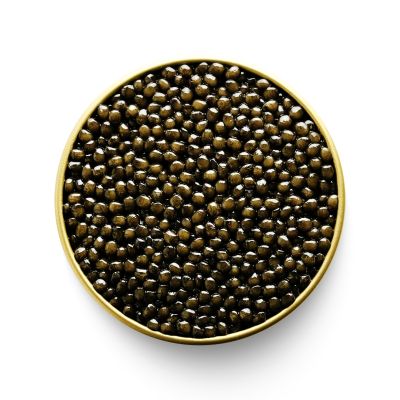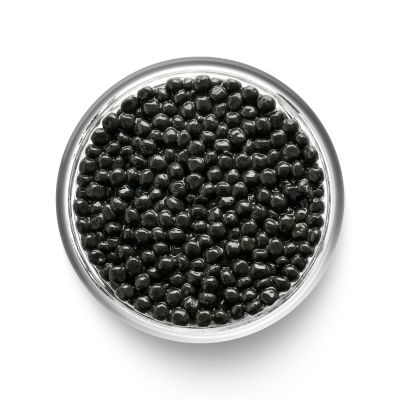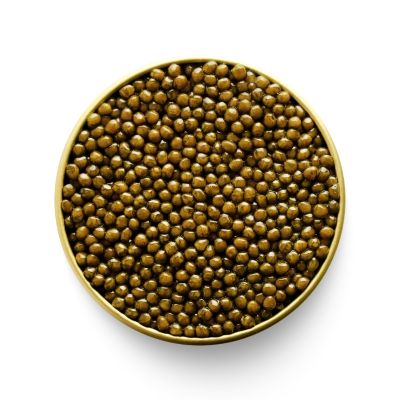At Marky’s online store, you can find a series of guides that provide detailed answers to probably
the
most perplexing questions about caviar and the way you should deal with it when it’s already at your
place. If you feel like you need to know more about this specialty, feel free to read the Marky’s
caviar
guides in this section.
And here you’re welcome to get quick tips on how to understand caviar and be sure of the product you
order online.
What do “classic”, “royal”, and “imperial” stand for?
Although these words may seem to work just like marketing decorations, they actually play an
essential
practical role. These adjectives describe the grade of caviar.
The description is based mainly on the size and color of the beads:
- Classic beads are smaller, softer, darker and murkier than beads of the higher grades. Some
producers
describe such caviar as Select, attributing the Classic grade to grains of average size.
- Royal beads are larger and lighter in color, obviously. The larger size of beads indicates that
the
roe was taken from an older fish, which is rather a rarity along with the lighter tint. Rarity
increases
the grade and price.
- Imperial beads are the largest and the lightest in color. And the rarest in nature. For example,
the
Iranian Almas caviar from the roe of the albino sturgeon definitely deserves to be titled as
Imperial.
It is sold for $26,000 per one kilogram (about 3 lb. 2 oz.).
Between the Imperial and Royal grades, there’s also the intermediate Supreme grade. As you’ve
guessed,
Supreme caviar beads must be larger and have the lighter color than Royal beads.
Any CITES requirements for the specialty?
CITES is the international Convention on International Trade in Endangered Species. It’s an agreement
between the world’s governments signed to regulate global trade in wild plants and animals so that
it
doesn’t bring any species to extinction.
In the beginning of the 2000s, governments of different countries were cooperating to develop a
labeling
system for caviar exports. As a result of their joint efforts, it’s become mandatory to label caviar
from any species of sturgeons and paddlefish. The original CITES label must provide a set of
specific
information on the product, including the country of origin to identify the source of the caviar.
Because nowadays most of the world’s caviar is farmed, the CITES requirements for this product relate
mainly to its authenticity. To prove it, each registered caviar producer must place a uniquely
issued
CITES code to the bottom of the tins.
This code contains the following information:
The type of caviar (You may google it if you’re curious.)
- The source – cultivated or wild
- The country of origin
- The year of production
- The unique code number for the company which has the licence to pack the tins
- The unique code number of the caviar.
Marky’s caviar also meets the CITES labeling requirements.
Can we consider caviar as a vegetarian food?
The answer depends on the type of vegetarianism to which you or your dearest stick.
If the diet may include both fish and seafood, then caviar can be an option.
Caviar beads are unfertilized fish eggs. It means that when these fish eggs were salt-cured, there
were
no baby fishes inside them. On the other hand, it’s true that fishermen or caviar makers have to
kill
the fish to get the eggs.
This is where we should look up at the diet issue. If it allows fish, it can allow caviar.
How will Marky’s deliver caviar if you buy it online?
With our overnight shipping, you’ll get the order in one business day.
If you order a non-perishable product along with caviar, we provide the overnight delivery either.
Any non-Champagne pairings with beverages?
Yes, caviar and champagne make up the all-time gourmet classic. But how about any other combinations?
- White wines like Chardonnay or Sauvignon Blanc are always the right solution for seafood. So are
they
for caviar.
- Yet, red wines can also make a perfect accompaniment to the delicacy. Especially if you’ re also
going to serve some foie gras or red meat. You may opt for Pinot Noir or Cabernet Sauvignon.
- Rosés will make the flavorful pairings if you or your guests prefer this type of wine.
- Porter, Pilsner or Amber Ale, however surprising these options may seem, will play well if you
don’t want wine.
















The information below is required for social login
Sign In
Sign Up